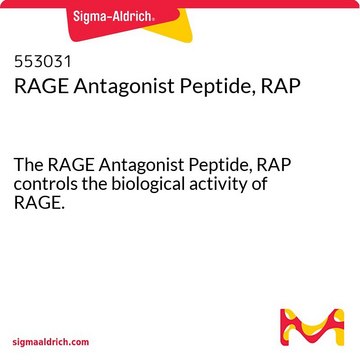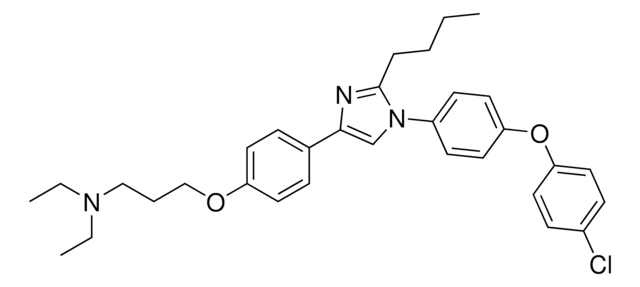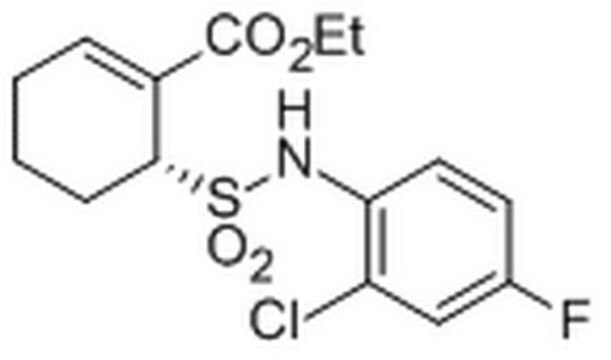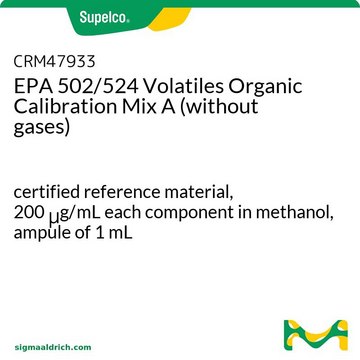553030
FPS-ZM1
≥98% (HPLC), semisolid,viscous liquid, RAGE antagonist, Calbiochem®
동의어(들):
RAGE Antagonist, FPS-ZM1, Receptor for AGE Antagonist, FPS-ZM1, N-Benzyl-4-chloro-N-cyclohexylbenzamide
About This Item
추천 제품
제품명
RAGE Antagonist, FPS-ZM1, RAGE Antagonist, FPS-ZM1, is a blood-brain-barrier permeant blocker of RAGE V domain-mediated ligand binding (Ki = 25, 148, & 230 nM, respectively, against Aβ40, HMGB1 & S100B, binding to sRAGE).
Quality Level
분석
≥98% (HPLC)
양식
semisolid
viscous liquid
제조업체/상표
Calbiochem®
저장 조건
OK to freeze
protect from light
색상
white to off-white
solubility
DMSO: 100 mg/mL
배송 상태
ambient
저장 온도
2-8°C
SMILES string
O=C(C1=CC=C(Cl)C=C1)N(CC2=CC=CC=C2)C3CCCCC3
InChI
1S/C20H22ClNO/c21-18-13-11-17(12-14-18)20(23)22(19-9-5-2-6-10-19)15-16-7-3-1-4-8-16/h1,3-4,7-8,11-14,19H,2,5-6,9-10,15H2
일반 설명
생화학적/생리학적 작용
RAGE
포장
경고
재구성
기타 정보
법적 정보
Storage Class Code
11 - Combustible Solids
WGK
WGK 3
Flash Point (°F)
Not applicable
Flash Point (°C)
Not applicable
시험 성적서(COA)
제품의 로트/배치 번호를 입력하여 시험 성적서(COA)을 검색하십시오. 로트 및 배치 번호는 제품 라벨에 있는 ‘로트’ 또는 ‘배치’라는 용어 뒤에서 찾을 수 있습니다.
이미 열람한 고객
자사의 과학자팀은 생명 과학, 재료 과학, 화학 합성, 크로마토그래피, 분석 및 기타 많은 영역을 포함한 모든 과학 분야에 경험이 있습니다..
고객지원팀으로 연락바랍니다.








